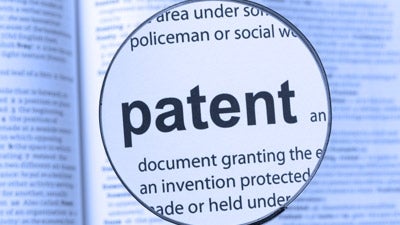
Once you’ve come up with a great idea for a product or service, it’s important to find ways to protect your invention. Not only do you want to make sure people know that it was you who invented the product, but you also want to prevent anyone else from copying your idea and profiting off of your ingenuity, cutting you out of the fruits of your labor.
There are steps you can take all along the invention process that can help to protect you and your work. We’ll deal with them in order.
Documentation
You need to put everything you do during the invention process in writing; putting everything in a journal is an easy way to keep it all in one place. And don’t just start when you’re actually working with a prototype; start from the moment you come up with the idea. Note the date as well as your idea as it stands. Then be sure to similarly document every time you tinker with the idea and work on developing it, both as a concept and as a tangible invention. Getting a trusted witness to your journal can help, too, providing further proof of your work and timeline. The main protection that this affords is if someone else stumbles across your work and copies it. You’ll be able to show that the idea was yours first.
Non-Disclosure
After you’ve been at work for a while, you will reach a point where you need to share your invention with other people. They might be potential partners or investors, whose help and advice you’ll need to continue working. You want to share your idea with the right people who will spur your own creative processes and help you move things forward, and you might choose to have those people sign a non-disclosure agreement. If you’re considering a non-disclosure agreement, it’s not an issue of trusting or not trusting individual people; it’s simply a question of protecting yourself, your work, and your invention. It’s during these earliest stages that your work is most vulnerable, so people will understand that every precaution is necessary.
Patent Process
When you’re nearing completion of your project, you should start thinking about the patent process. A good option for protecting yourself while you’re still working on the invention is a provisional application for patent. There’s no long process waiting to verify your claims, or any disputes over patent rights at this stage. While the provisional application does not provide any of the immediate legal protection of a full patent, it has its own benefits. For one thing, it provides you additional proof of your own claim should there be any dispute when you later apply for a regular patent, providing a specific date at which you unquestionably had the idea. The provisional application is significantly simpler to fill out and file than the regular patent, and much cheaper (as little as $130 at present). You’ll also be able to use the phrase “Patent Pending” in association with your product.
However, the provisional application only lasts for 12 months from the date of filing; if you don’t file for a regular patent within 12 months, then you lose any benefits of the provisional application. One of those benefits, though, is that you can use the 12 months to finish working on your product, making any necessary changes prior to the full application. If you make any modifications after the regular patent application is filed, it’s a much more complicated process requiring addendums to the patent application. The provisional application thus can be a good preliminary step in the patent process.
When you’re ready, file for a regular patent. You’ll want to do market research to make sure there are no other inventions that would prevent you from receiving a patent, which requires your product be new, useful, and non-obvious. Look out for inventions that are almost exact matches, and also look for ideas that are similar but not exact, but which you will need to distinguish from your own invention during the patent application process. The process can be lengthy and expensive, so talk with a patent attorney if you have any questions about whether you’ll be successful in acquiring a patent. You’ll probably also want help with the application itself, which can be long and complicated. If you’re successful in your patent bid, though, you’ll be protected for 20 years, during which you’ll receive the full benefits of your invention. No one else will be able to copy your idea during that period, allowing you to use the lack of competition to establish your product and build your profits, hopefully making back the costs of the patent application process and then some.
Published: September 6, 2013
4319 Views
4319 Views












